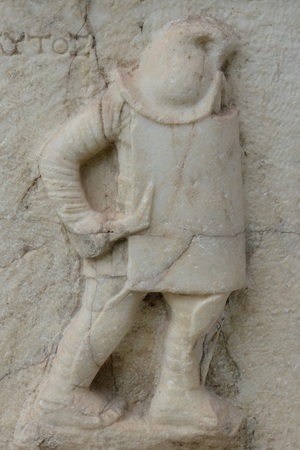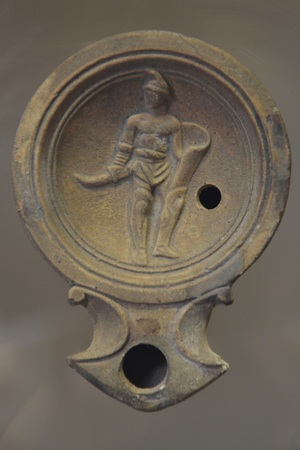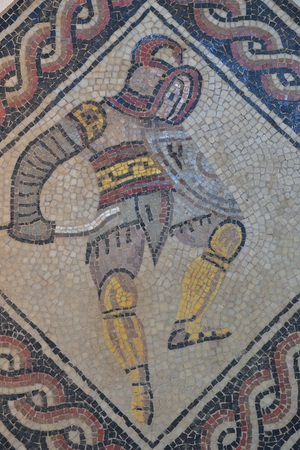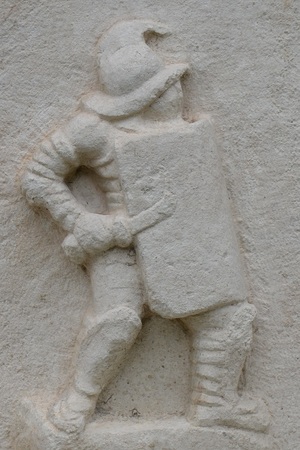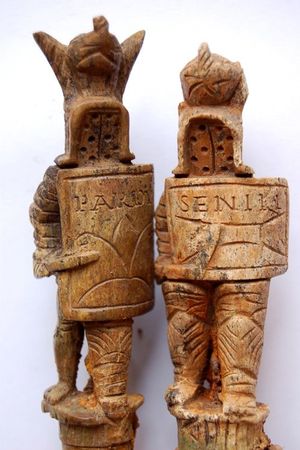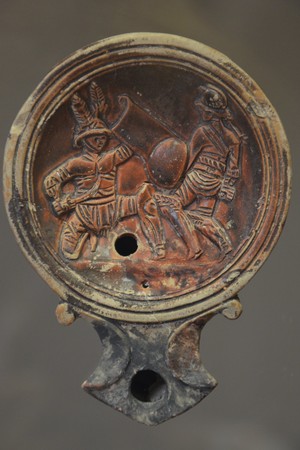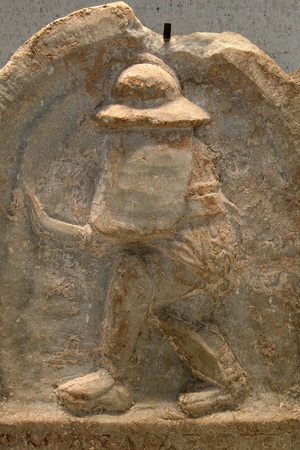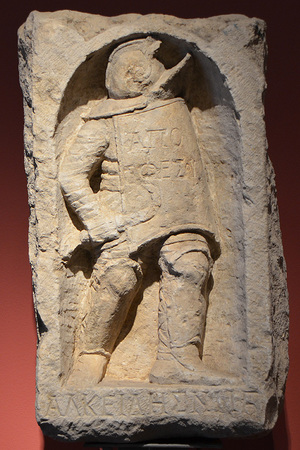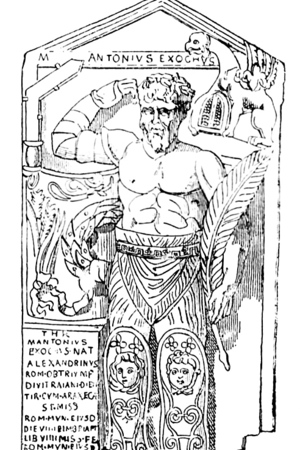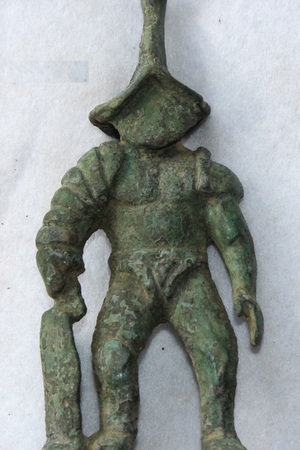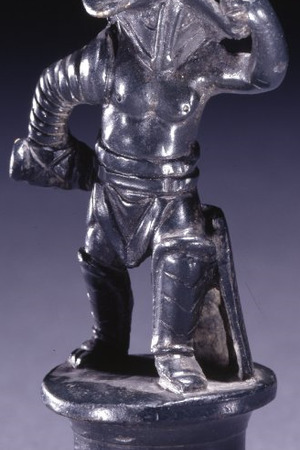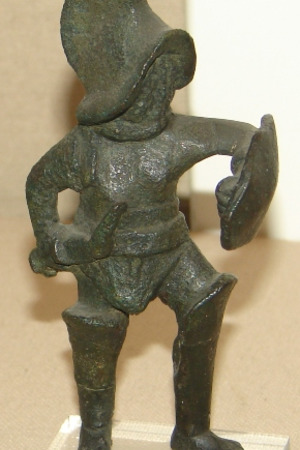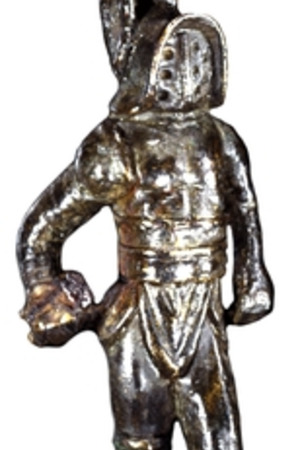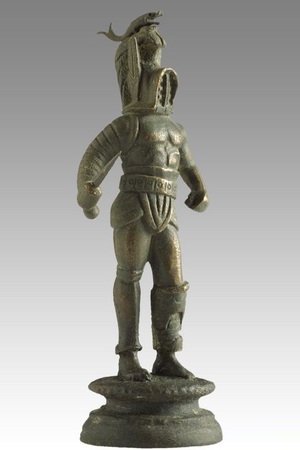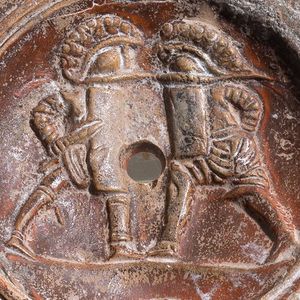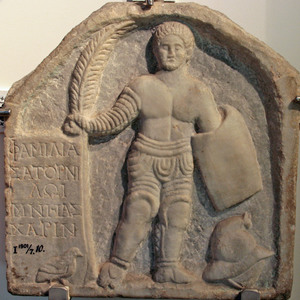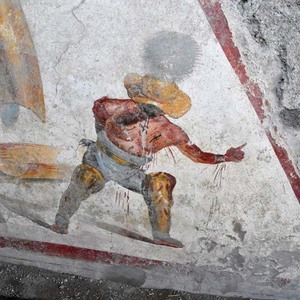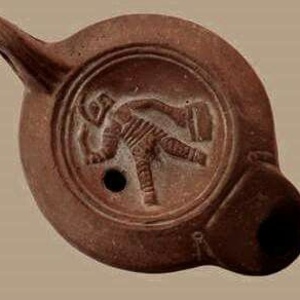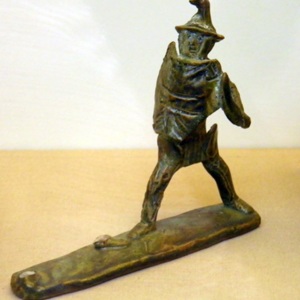Thraex
A Thraex (Latin: thraex) was a type of gladiator equipped with a shield and a sword. Initially, this term referred to gladiators who were originally from Thrace, but over time it came to denote a specific type of gladiator and his set of equipment, regardless of the fighter's origin.
Gladiatorial games were wildly popular in ancient Rome, and there were so many types of gladiators that a whole classification system existed based on their weaponry, combat tactics, and the rules of engagement. Thracian gladiators were equipped as follows: they wore a subligaculum (a type of loincloth), a balteus (belt), a manica (arm guard), a large helmet with a crest and a griffin at the end (the griffin was a symbol of the goddess of retribution, Nemesis), a small shield, often a shortened scutum or a parma, and two large greaves (ocrea). Their weapon was a gladius or a small curved Thracian sword known as a sica, which was a cunning weapon because it allowed the gladiator to cut at the unprotected back parts of the opponent’s arms and legs, as well as to bypass the opponent's shield with its strikes. Many historians consider the thraex and secutor to be subtypes of the murmillo. Their most frequent opponents in the arena were murmillos, hoplomachi, provocatores, retiarii, or secutores.
Spartak
The most famous gladiator became the leader of an uprising, Spartacus. According to one version, he was of Thracian origin and at some point deserted the Roman army—possibly due to a conflict with his commanders and a decision to join his fellow countrymen during Rome's Thracian wars. If Gabba is correct, and Spartacus deserted Sulla's army in Italy, he would have likely joined the Marian side and might have led a cavalry unit that conducted guerrilla warfare against Sulla’s forces. During this period, he had the opportunity to learn the Latin language and Roman military tactics. After being captured, for an unknown reason, he was not crucified or thrown to the beasts in the circus, as was usually done with deserters and robbers, but was instead enslaved.
Spartacus was sold at least three times, with the first sale occurring in Rome. Vladimir Goroncharovsky suggested that Spartacus became a gladiator at around the age of thirty, which was relatively late. At the beginning of his career, Spartacus might have fought as a murmillo, but he quickly transitioned to the type of gladiator associated with his nationality—the thraex. Over time, Spartacus, who distinguished himself by his strength and courage, became one of the best gladiators in the school of Gnaeus Cornelius Lentulus Batiatus in Capua. His privileged position is indicated by the fact that he had a wife, which implies that he was given a separate room—a rarity for gladiators. It is unknown whether Spartacus became a rudiarius, meaning whether he received a wooden sword as a symbol of freedom.
Spartacus’s gladiatorial career ended after his uprising in 73 BC.
Equipment
Thraex equipment:
Traditionally, gladiators fought on sand, but for reenactments on hard surfaces, it is recommended to use authentic footwear, such as caligae.
Related topics
Gladiator, Sica, Helmet, Manica, Ocrea, Balteus, Subligaculum, Gladius, Pugio, Murmillon, Retiarius, Secutor, Hoplomachus

 Gallery
Gallery






